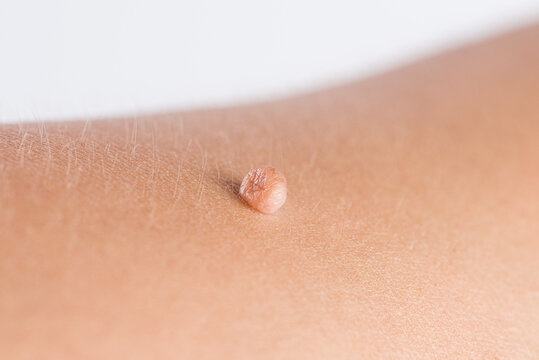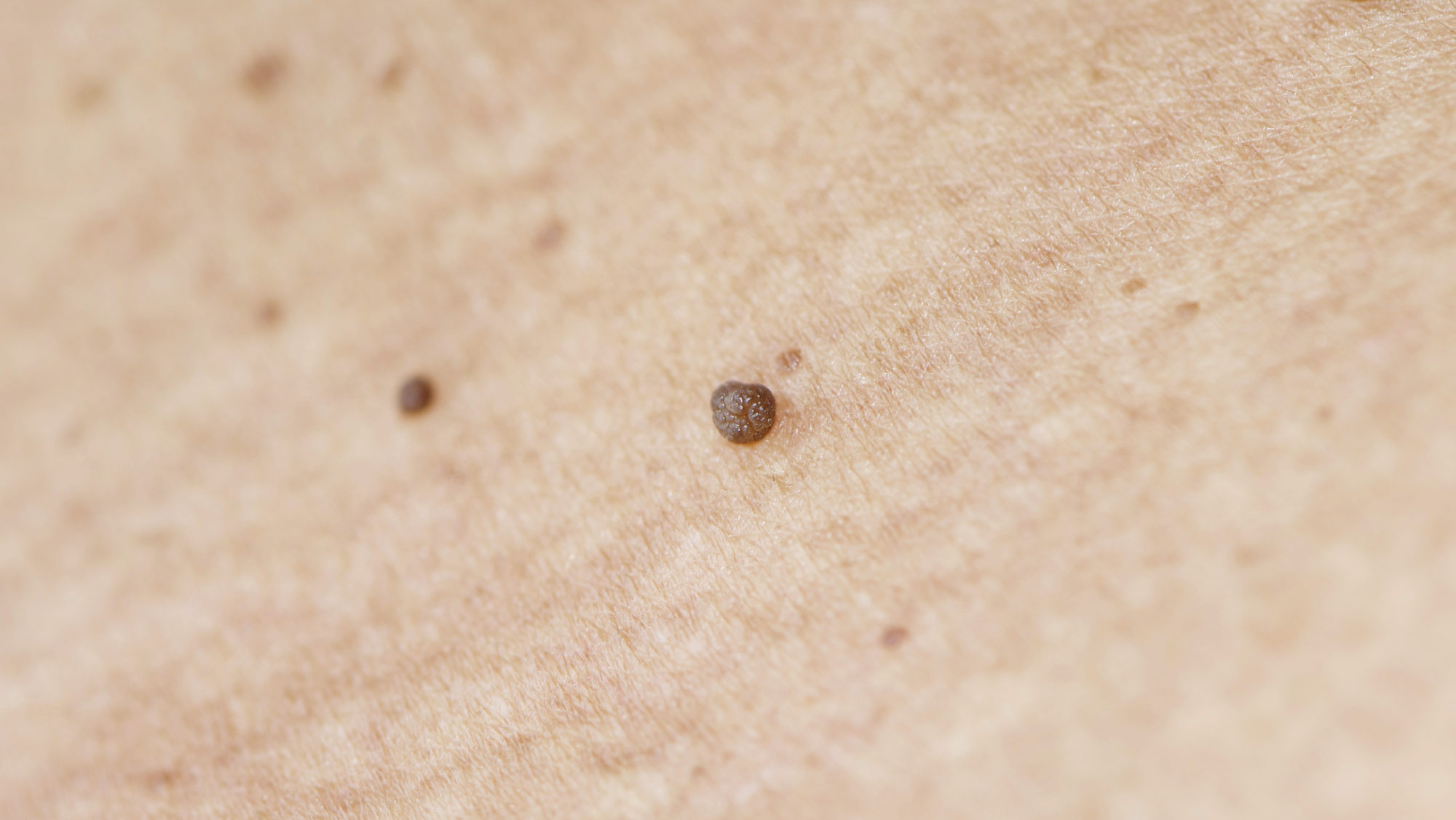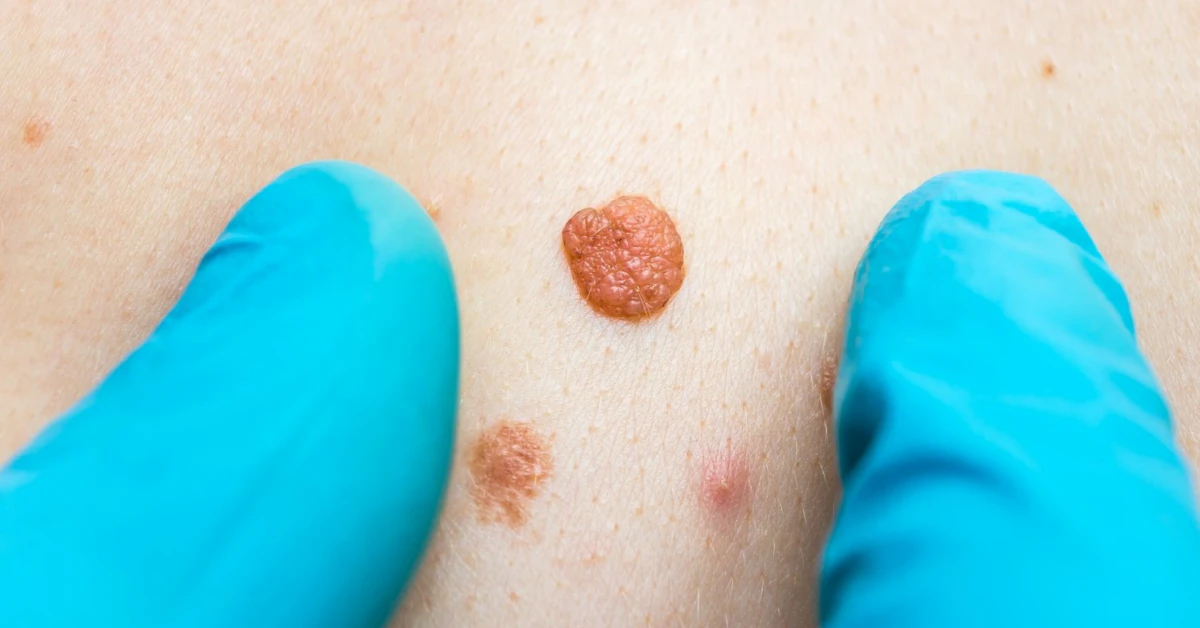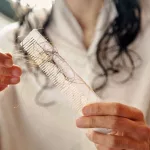You know that little flap of skin on your neck that’s been there forever? The one that catches on your earring or waistband? Yeah, that guy.
It’s never bothered you. It’s just… always been there.
But now, it looks… different.
Maybe it’s darker. Maybe it bled when you brushed it this morning. Or maybe you just googled “can skin tags be cancerous” at 2 a.m. because the idea slipped into your brain and refused to leave.
I get it.
And here’s the honest truth—something I wish someone had told me years ago:
Skin tags themselves are not cancerous. Not ever.
But—big but here—some skin cancers can look exactly like skin tags. And that’s where things get tricky.
So no, your skin tag didn’t “turn into” cancer. But if something on your skin is changing—growing, bleeding, itching, or just feeling wrong—it’s worth getting checked.
Let’s walk through this together. No panic. No scary jargon. Just real-talk facts, straight from dermatologists, about what’s normal, what’s not, and when to pick up the phone.
What Are Skin Tags?

First thing’s first: skin tags—medically called “acrochordons“—are harmless. Full stop.
They’re soft, flesh-colored little flaps of skin, usually hanging by a thin stalk (called a peduncle). They show up where skin rubs against skin or clothing—like your neck, armpits, groin, or even eyelids. Sometimes they’re the color of your skin. Other times, slightly darker.
They don’t hurt. They don’t itch. They’re just… there.
And honestly? About 46% of adults in the U.S. have at least one—they’re that common according to research cited by Healthline.
So if you’ve got one? You’re not alone. Millions of people do.
They’re more common if you’re pregnant, have insulin resistance, or carry extra weight. Hormones, friction, and genetics all play a role. But truthfully? Anyone can get them. There’s no “bad” reason. Just biology doing its thing.
Are They Dangerous?
Here’s the short answer: no.
Skin tags are benign—which means they’re not malignant, they don’t spread, and they don’t turn into cancer. That part is important.
But—and this is where people get confused—just because a growth looks like a skin tag doesn’t mean it is one.
Some types of skin cancer, like basal cell carcinoma or even melanoma, can start off looking like a harmless tag. Small. Flesh-colored. Unassuming.
And that’s the sneaky part.
That’s why the real question isn’t “are skin tags cancerous?”—because they’re not.
The real question is: “Is this actually a skin tag?”
When to Worry
You don’t need to freak out over every bump. But you do need to pay attention when things change.
Ask yourself:
- Did it just appear out of nowhere?
- Has it changed in size, color, or shape recently?
- Does it bleed or crust without being irritated?
- Is it itching, stinging, or painful?
- Is it in a spot that gets a lot of sun—like your face or shoulders?
If you answered yes to any of those—even one—then it’s worth a visit to a dermatologist.
Because here’s the thing: early detection saves lives. And skin cancer is treatable, especially when caught fast.
A dermatologist can take one look—sometimes using a tool called a dermatoscope—and tell if it’s a tag or something more serious. If they’re unsure, they might do a simple biopsy. Remove the growth, send it to the lab, and get a clear answer.
It’s not overkill. It’s peace of mind.
What Do Cancerous Skin Tags Look Like?

Let’s be clear: there’s no such thing as a “cancerous skin tag.” That’s a myth. But there are cancers that look like skin tags.
And knowing the difference could be life-saving.
Here’s what to watch for:
| Normal Skin Tag | Could It Be Cancer? |
|---|---|
| Flesh-colored or slightly darker | Suddenly turns black, red, scaly, or multicolored |
| Soft, smooth, symmetrical | Irregular border, rough texture, crusty surface |
| Stable in size | Grows quickly—over days or weeks |
| No pain or bleeding | Bleeds easily or won’t heal |
| In friction zones (armpits, groin) | On sun-exposed areas (nose, ears, scalp) |
If something looks “off,” trust your gut. You know your skin better than anyone.
And if you’re wondering, “what do cancerous skin tags look like?“—it’s not about a single look. It’s about change. Behavior. Subtle red flags that slowly add up.
Skin cancers like basal cell carcinoma often start as a shiny, pearly bump. Squamous cell can look like a scab that won’t heal. And melanoma—while rare—can be asymmetrical, with uneven borders and mixed colors. That’s why the ABCDE rule exists:
- Asymmetry
- Border irregularity
- Color variation
- Diameter larger than 6mm
- Evolving over time
If a spot hits any of those, get it checked.
Who Gets Skin Tags?
Like I said—pretty much everyone.
But some people are more prone than others. If you’re in your 40s or 50s, carrying extra weight, or dealing with insulin resistance or diabetes, you might notice more tags showing up.
They’re also super common during pregnancy—hormones go wild, skin stretches, and boom: tags appear.
And yeah, there might be a family link. If your mom or dad had them, you’re more likely to get them too.
But again—none of this means you’re “doing something wrong.” It’s just how bodies work.
Skin Tag Removal
So you’ve got a tag. It’s not cancer. It’s not hurting you. But… you just want it gone.
Fair enough.
Maybe it’s in a visible spot. Maybe it gets caught on your bra strap every morning. Or maybe you just hate the way it looks.
That’s totally valid.
And removal? It’s safe, quick, and usually painless—when done by a pro.
Here are the most common methods:
- Cryosurgery: Freeze it off with liquid nitrogen.
- Excision: Snip it off with tiny surgical scissors.
- Electrosurgery: Burn it off with a light electric current.
All of these are done in-office, take just minutes, and heal quickly.
But here’s the big warning: do not try to remove it yourself.
No dental floss. No nail clippers. No YouTube hacks.
Why?
Because what if it’s not a tag?
Because even if it is, you could cause bleeding, infection, or scarring. And worse—you might delay a cancer diagnosis by trying to “fix” it at home.
According to dermatologists at Balcones Dermatology & Aesthetics, one of the biggest risks isn’t the tag—it’s mistaking something dangerous for a harmless bump as they noted in a 2025 blog post.
So please. Let a professional handle it.
Misdiagnosis Risk

I’ll say it again: skin tags don’t become cancerous.
But cancers can masquerade as skin tags.
One patient I read about had a small growth on her cheek for years. Everyone assumed it was a tag. But when it started bleeding? She went in. Turned out to be basal cell carcinoma—the most common type of skin cancer.
Caught early, it was removed easily. But what if she’d ignored it?
That’s the scary part. Skin cancer doesn’t always announce itself with drama. Sometimes, it whispers.
That’s why any new or changing skin growth—even one that looks like a tag—deserves a second look.
What Happens at the Dermatologist?
If you go in with a concern, here’s what to expect:
The dermatologist will examine the spot—usually with a magnifying tool called a dermatoscope. They’ll check the shape, color, texture, and borders.
If it looks 100% like a tag? Great. You can talk about removal options.
If it’s even slightly suspicious? They might do a biopsy. It’s a quick procedure—numb the area, remove a small piece, send it to the lab.
Results come back in about a week.
And if it comes back as skin cancer? Don’t panic. Most early-stage BCC and SCC are cured with simple removal. No chemo. No radiation. Just surgery.
And melanoma, while more serious, is highly treatable when caught early.
So again: go in with curiosity, not fear.
Final Thoughts
Look—skin tags are normal. They’re not a flaw. They’re not a sign of poor health. They’re not even “ugly,” unless you decide they are.
But what is important?
Noticing change.
Paying attention to your body.
And most of all—trusting yourself when something feels off.
You don’t have to be a doctor to know your own skin. You don’t need permission to get something checked.
If you’re asking, “Could this be cancer?”—that’s your body’s way of saying, “Hey. Let’s look into this.”
So make the call. See the dermatologist. Get it off your chest—literally and figuratively.
And if it’s just a tag? Awesome. You’ll walk away with confidence.
And if it’s something more? You caught it early. And that makes all the difference.
Your skin tells a story. Listen to it.
And hey—next time you catch that little tag on your neck? Don’t just ignore it.
Take a picture. Monitor it. Be curious.
Because knowledge? That’s power.
And peace of mind? Priceless.


















Leave a Reply
You must be logged in to post a comment.